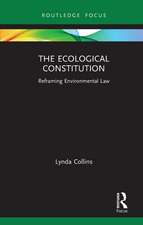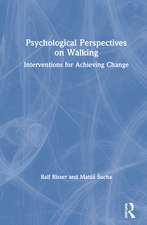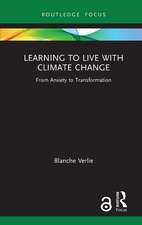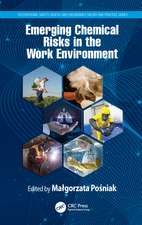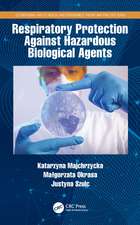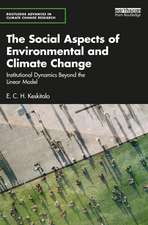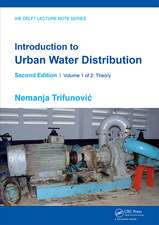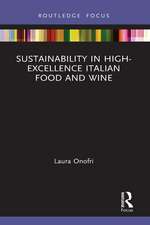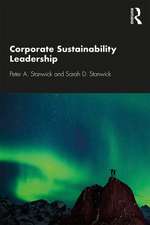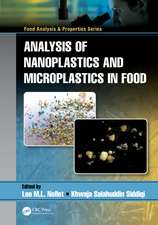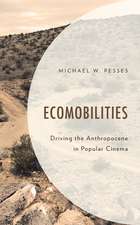Ecosystem Conservation and Management: Models and Application
Autor Marino Gatto, Renato Casagrandien Limba Engleză Paperback – 14 oct 2023
Air and water pollution, overexploitation of renewable resources (e.g. marine fish stocks and forests), massive land-use change together with climate change impact the Earth biodiversity and impair the functioning of ecosystems. Globalization increases the risk of diffusion of alien species and new pathogens.
A panoply of numerical problems mainly based on real data from the ecological literature enables the reader to practice the presented modelling tools.
presented modelling tools.
| Toate formatele și edițiile | Preț | Express |
|---|---|---|
| Paperback (1) | 360.18 lei 39-44 zile | |
| Springer International Publishing – 14 oct 2023 | 360.18 lei 39-44 zile | |
| Hardback (1) | 373.89 lei 39-44 zile | |
| Springer International Publishing – 13 oct 2022 | 373.89 lei 39-44 zile |
Preț: 360.18 lei
Nou
Puncte Express: 540
Preț estimativ în valută:
68.92€ • 72.11$ • 57.25£
68.92€ • 72.11$ • 57.25£
Carte tipărită la comandă
Livrare economică 31 martie-05 aprilie
Preluare comenzi: 021 569.72.76
Specificații
ISBN-13: 9783031094828
ISBN-10: 3031094824
Pagini: 289
Ilustrații: XV, 289 p. 182 illus., 168 illus. in color.
Dimensiuni: 155 x 235 mm
Ediția:1st ed. 2022
Editura: Springer International Publishing
Colecția Springer
Locul publicării:Cham, Switzerland
ISBN-10: 3031094824
Pagini: 289
Ilustrații: XV, 289 p. 182 illus., 168 illus. in color.
Dimensiuni: 155 x 235 mm
Ediția:1st ed. 2022
Editura: Springer International Publishing
Colecția Springer
Locul publicării:Cham, Switzerland
Cuprins
Part I. Species and populations threatened by extinction.- Chapter 1. Threatened biodiversity.- Chapter 2. The risk of extinction: Allee effect and genetic deterioration.- Chapter 3. Extinction risk analysis: demographic and environmental stochasticity.- Chapter 4. Problems on the analysis of Extinction Risk (ER).- Part II. Populations in spatially explicit landscapes.- Chapter 5. Movement of organisms and the dynamics of populations in space.- Chapter 6. Habitat fragmentation and destruction: the dynamics of metapopulations.- Chapter 7. Problems on Spatial Ecology (SE).- Part III. Sustainabilty of biomass harvesting and its harvesting (M).- Chapter 8. The management of natural populations harvesting.- Chapter 9. Problems on the Management of renewable resource harvesting (M).- Part IV. Parasite and disease ecology.- Chapter 10. Ecology of parasites and infectious diseases.- Chapter 11. Problems on the Ecology of Parasites and Disease (PD).
Notă biografică
Marino Gatto is Professor emeritus, Politecnico di Milano, Italy. His research focuses on ecological modelling, fish population dynamics and management, and disease and parasite ecology. He was President of the Italian Society of Ecology from 2003 to 2006, and is a member of Istituto Lombardo Accademia di Scienze e Lettere and Istituto Veneto di Scienze, Lettere ed Arti.
Renato Casagrandi is Professor of Ecology at the Department of Electronics, Information and Bioengineeing, Politecnico di Milano. His research is devoted to designing and analysing dynamical models for spatiotemporal processes in ecology and epidemiology. Since 2018, he is Chair of the B.Sc. and M.Sc. Environmental Engineering programs at Politecnico di Milano.
Renato Casagrandi is Professor of Ecology at the Department of Electronics, Information and Bioengineeing, Politecnico di Milano. His research is devoted to designing and analysing dynamical models for spatiotemporal processes in ecology and epidemiology. Since 2018, he is Chair of the B.Sc. and M.Sc. Environmental Engineering programs at Politecnico di Milano.
Textul de pe ultima copertă
This textbook provides basic quantitative models allowing researchers and decision makers to a) assess viability of threatened populations and evaluate the success of species reintroductions, b) estimate invasion abilities of alien species, c) evaluate the persistence of metapopulations subjected to habitat destruction and fragmentation, d) analyze policies and strategies for the sustainable harvesting of biological resources, and e) assess the course of human and nonhuman diseases and the possible containment measures.
Air and water pollution, overexploitation of renewable resources (e.g. marine fish stocks and forests), massive land-use change together with climate change impact the Earth biodiversity and impair the functioning of ecosystems. Globalization increases the risk of diffusion of alien species and new pathogens.
A panoply of numerical problems mainly based on real data from the ecological literature enables the reader to practice the presented modelling tools.
presented modelling tools. presented modelling tools. presented modelling tools. presented modelling tools. presented modelling tools. presented modelling tools. presented modelling tools. presented modelling tools. presented modelling tools. presented modelling tools.
Air and water pollution, overexploitation of renewable resources (e.g. marine fish stocks and forests), massive land-use change together with climate change impact the Earth biodiversity and impair the functioning of ecosystems. Globalization increases the risk of diffusion of alien species and new pathogens.
A panoply of numerical problems mainly based on real data from the ecological literature enables the reader to practice the presented modelling tools.
presented modelling tools. presented modelling tools. presented modelling tools. presented modelling tools. presented modelling tools. presented modelling tools. presented modelling tools. presented modelling tools. presented modelling tools. presented modelling tools.
Caracteristici
Provides operative tools within a quantitative approach to dealing with challenging sustainability issues Treats various hot topics of conservation and management ecology Based on real data from scientific literature that challenge the reader’s understanding of concepts and methods

